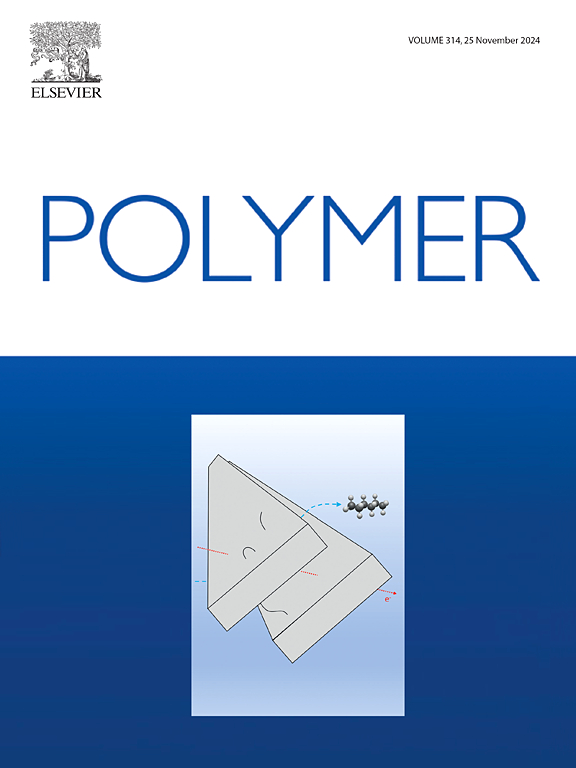Enhanced solid α- to γ′-phase transition of poly(vinylidene fluoride) via polar nanodomains with high-concentration ionic liquids
IF 4.1
2区 化学
Q2 POLYMER SCIENCE
引用次数: 0
Abstract
Timesaving but efficient fabrication strategy of γ′-poly(vinylidene fluoride) (PVDF) materials is highly demanded for manufacturing PVDF-based electronic devices, yet remains challenging so far. In this work, over 90 % γ′-phase crystals have been obtained in just 50 min in microphase-separated PVDF-co-(PVDF-g-IL) [i.e., the copolymer of PVDF and PVDF grafted with ionic liquid (IL, 1-butyl-3-vinylimidazolium tetrafluoroborate)]. Our results indicate that the PVDF-g-IL nanodomains with high-concentration ILs induced by microphase separation play multiple roles in the fast and high-efficiency solid phase transition of PVDF crystals. Firstly, they produce nucleation effect instead of depression effect on the crystallization of PVDF matrix since all miscible ILs have been restricted in these domains; secondly, the high-concentration ILs in PVDF-g-IL nanodomains facilitates to induce polar conformation of PVDF segments and the consequent γ′-phase PVDF crystals; finally, the solid phase transition can be spread to the whole specimen with the help of widely distributed PVDF-g-IL nanodomains within PVDF matrix, regardless of the thickness of specimen. Our results are significant for not only the fabrication of γ′-PVDF composites, but also the basic understanding of solid α- to γ′-phase transition.


求助全文
约1分钟内获得全文
求助全文
来源期刊

Polymer
化学-高分子科学
CiteScore
7.90
自引率
8.70%
发文量
959
审稿时长
32 days
期刊介绍:
Polymer is an interdisciplinary journal dedicated to publishing innovative and significant advances in Polymer Physics, Chemistry and Technology. We welcome submissions on polymer hybrids, nanocomposites, characterisation and self-assembly. Polymer also publishes work on the technological application of polymers in energy and optoelectronics.
The main scope is covered but not limited to the following core areas:
Polymer Materials
Nanocomposites and hybrid nanomaterials
Polymer blends, films, fibres, networks and porous materials
Physical Characterization
Characterisation, modelling and simulation* of molecular and materials properties in bulk, solution, and thin films
Polymer Engineering
Advanced multiscale processing methods
Polymer Synthesis, Modification and Self-assembly
Including designer polymer architectures, mechanisms and kinetics, and supramolecular polymerization
Technological Applications
Polymers for energy generation and storage
Polymer membranes for separation technology
Polymers for opto- and microelectronics.
 求助内容:
求助内容: 应助结果提醒方式:
应助结果提醒方式:


